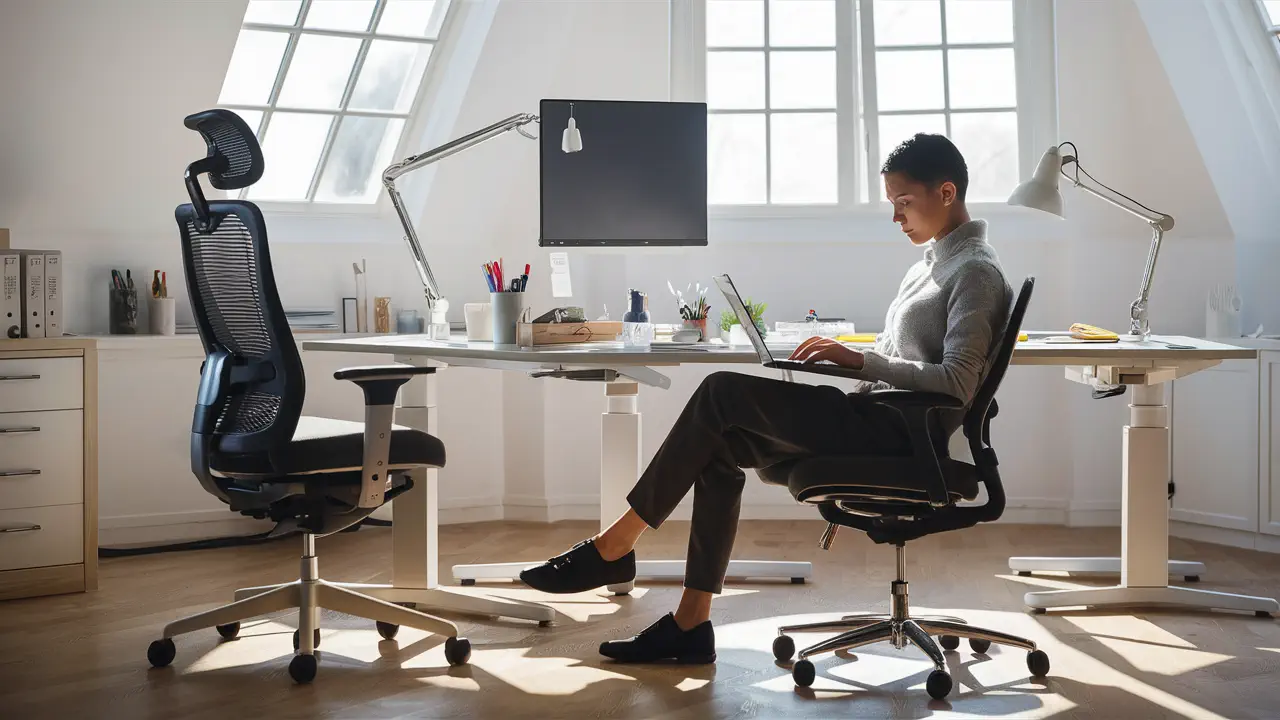
With more people working from home than ever before, proper ergonomics have become essential for maintaining health and productivity. Poor workstation setup can lead to neck pain, back pain, wrist strain, and even chronic health issues over time.
Setting up an ergonomic home workspace can help prevent these problems by promoting good posture, reducing strain, and increasing comfort. In this guide, we’ll walk you through the best ergonomic practices to create a safe, comfortable, and efficient workspace at home.
Why Ergonomics Matter in a Home Workspace
Many people unknowingly work in unhealthy positions, leading to:
🚨 Back and neck pain from poor posture
🚨 Eye strain and headaches due to improper screen placement
🚨 Wrist and hand pain from incorrect keyboard/mouse positioning
🚨 Fatigue and discomfort due to prolonged sitting
By making small ergonomic adjustments, you can significantly reduce strain and improve overall well-being.
Key Elements of an Ergonomic Home Office
1. Choosing the Right Chair
A good ergonomic chair supports your spine and reduces strain. Here’s what to look for:
✅ Adjustable seat height – Your feet should be flat on the ground, with knees at a 90-degree angle.
✅ Lumbar support – A curved backrest that supports your lower back prevents slouching.
✅ Armrests – Helps reduce strain on shoulders and wrists.
✅ Comfortable cushioning – Prevents pressure buildup from long sitting hours.
🚀 Pro Tip: If you don’t have an ergonomic chair, use a rolled-up towel or small cushion for lumbar support.
2. Desk Setup for Proper Posture
Your desk should allow for comfortable arm positioning and proper screen alignment. Follow these guidelines:
✅ Desk height: Your arms should form a 90-degree angle when typing.
✅ Keyboard position: Keep it at elbow height and directly in front of you.
✅ Mouse placement: Keep your mouse close to the keyboard to avoid unnecessary reaching.
✅ Foot positioning: Keep feet flat on the ground or use a footrest if necessary.
🚀 Pro Tip: If your desk is too high, raise your chair and use a footrest for comfort.
3. Monitor Placement to Reduce Eye and Neck Strain
Proper screen positioning is essential to avoid neck pain and eye fatigue. Follow these guidelines:
✅ Eye level: The top of your monitor should be at or slightly below eye level.
✅ Distance: Your screen should be about an arm’s length away (~20 inches).
✅ Reduce glare: Position your monitor perpendicular to windows to avoid direct light reflections.
🚀 Pro Tip: If using a laptop, place it on a laptop stand and use an external keyboard and mouse for better posture.
4. Keyboard and Mouse Ergonomics
Typing or using a mouse incorrectly can lead to wrist pain and carpal tunnel syndrome. Prevent this by:
✅ Keeping wrists straight – Avoid bending them upwards or downwards.
✅ Using wrist support – A cushioned wrist pad can reduce pressure.
✅ Lightly gripping the mouse – Avoid unnecessary tension in your fingers.
✅ Using keyboard shortcuts – Reduces repetitive strain.
🚀 Pro Tip: Switch between hands occasionally when using the mouse to reduce strain.
5. Lighting and Eye Health
Poor lighting causes eye strain, headaches, and fatigue. Improve lighting with these tips:
✅ Use natural light – Position your desk near a window, but avoid glare on screens.
✅ Use task lighting – A desk lamp with adjustable brightness can reduce strain.
✅ Reduce blue light exposure – Enable blue light filters on screens or use blue light blocking glasses.
🚀 Pro Tip: Follow the 20-20-20 rule – Every 20 minutes, look at something 20 feet away for 20 seconds to reduce eye strain.
6. Take Breaks and Move Frequently
Sitting for long periods can cause stiffness and fatigue. Stay active by:
✅ Standing up every 30-60 minutes – Walk around or stretch.
✅ Using a sit-stand desk – Alternating between sitting and standing improves circulation.
✅ Stretching regularly – Simple exercises prevent stiffness and boost energy.
🚀 Pro Tip: Set reminders on your phone or computer to take breaks and change postures frequently.
Best Ergonomic Accessories for a Home Office
📌 Laptop stand – Raises screen height for better posture.
📌 External keyboard & mouse – Helps maintain a neutral wrist position.
📌 Ergonomic chair cushion – Provides additional back and seat support.
📌 Footrest – Keeps feet flat and prevents leg strain.
📌 Standing desk converter – Allows switching between sitting and standing easily.
Final Thoughts
A well-designed ergonomic home workspace can prevent injuries, reduce discomfort, and boost productivity. With just a few simple adjustments, you can improve posture, reduce strain, and work comfortably for long hours.
By investing in proper furniture, adjusting screen height, and taking frequent breaks, you can create a workspace that supports both physical and mental well-being.
Start making ergonomic improvements today—your body will thank you! 🙌💻
